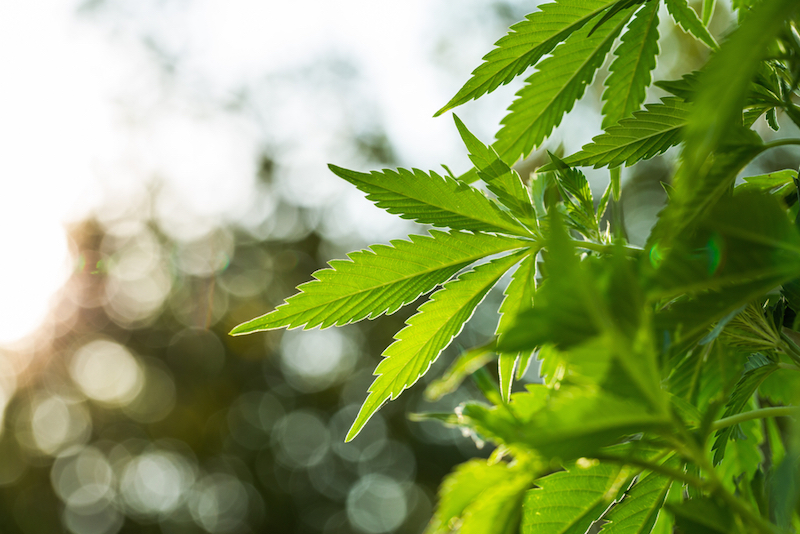Canada Issues Guidelines for Safer Use of Marijuana

As many countries move toward legalizing pot, officials in Canada are releasing guidelines for how people can lower the health risks that may be associated with the drug if they choose to use it.
The guidelines, which were released today (June 23) by the Canadian Research Initiative on Substance Misuse, are meant to educate marijuana users so that they can make choices that could modify the risks from the drug. The researchers likened the new pot guidelines to recommendations that already exist to help people lower the risks associated with drinking alcohol. [Mixing the Pot? 7 Ways Marijuana Interacts with Medicines]
"Factual, science-based information can provide guidance to cannabis users to make choices that reduce both immediate and long-term risks to their health," Dr. Benedikt Fischer, a senior scientist at the Centre for Addiction and Mental Health (CAMH) in Ontario, who led the development of the guidelines, said in a statement.
In Canada, more than 10 percent of adults, and 25 percent of teens, say they've used marijuana in the past year, the researchers wrote in the guidelines. In April, Prime Minister Justin Trudeau introduced legislation to legalize the recreational use of marijuana in the country. For comparison, around 13 percent of people ages 12 and older in the United States report having used marijuana in the past year, according to a 2016 study.
Marijuana use is linked with health risks that occur soon after smoking the drug, such as problems with thinking, memory and coordination; hallucinations; and risk of injury (such as injuries that result from car crashes that occur when people drive impaired). The drug is also linked with long-term risks, such as mental health problems, marijuana dependence and chronic respiratory or lung problems, according to the guidelines.
As with any drug or risky behavior, the best way for people to reduce the risks from marijuana is to avoid using it altogether, the guidelines say. But people who choose to use marijuana are advised to follow these guidelines:
- Avoid using marijuana at a young age. Using marijuana before age 16 increases the likelihood of developing health, educational and social problems, according to the guidelines. Therefore, people should avoid using pot in their teen years. In general, the later in life a person starts using cannabis, the lower their risks of problems will be.
- Choose "lower risk" cannabis products. Products with high levels of tetrahydrocannabinol (THC) are more likely to be harmful to health, the guidelines say. However, cannabidiol (CBD), another compound in marijuana, may counteract some of the harms of THC. As such, products with high levels of CBD relative to THC may reduce some of the drug's risks, according to the guidelines.
- Don't use synthetic cannabinoids. These products, sometimes called "K2" or "Spice," are linked with serious side effects, including death.
- Avoid smoking cannabis. The traditional way of smoking cannabis — by lighting it and letting it burn — can harm the lungs and respiratory system, especially when the cannabis being smoked is combined with tobacco. Alternative inhalation methods, such as vaporizers and e-cigarette devices, are less risky, but not risk-free, the guidelines say. Perhaps the safest way to use the drug is to choose marijuana edibles, because they bypass lung-related risks, the guidelines say, noting that edibles are not risk-free, either.
- Avoid "deep inhalation" and "breath holding." These practices increase the amount of toxic material absorbed by the lungs, the guidelines say.
- Limit cannabis use. Using cannabis frequently — for example, every day or almost every day — is linked with higher risks of health and social problems. To lower their risks, marijuana users are advised to aim for "occasional use," such as on weekends, or one day a week at most, the guidelines say.
- Don't drive or operate other machinery while under the influence of cannabis. Driving or operating machinery under the influence increases your risk of being involved in an accident. Users are advised to wait at least 6 hours after using the drug before driving or operating other machinery.
- Avoid marijuana use if you are pregnant or at increased risk for problems that could result from use of the drug. People who have a history of psychosis or substance use disorder (or have a family member who does) should avoid using marijuana because they are at higher risk of mental health problems from the drug. Pregnant women should not use the drug because it could harm their fetus or infant, the guidelines say.
- Avoid combining risks. The greater the number of risky pot behaviors a person engages in, the higher their risks of harm will be, the guidelines say. For example, users should avoid combining multiple risks, such as starting in their teens and using it every day, according to the guidelines.
"These guidelines are an important tool supporting a public health approach to cannabis use," said Ian Culbert, executive director of the Canadian Public Health Association, which endorsed the guidelines. [Marijuana Could Treat These 5 Conditions]
Sign up for the Live Science daily newsletter now
Get the world’s most fascinating discoveries delivered straight to your inbox.
"Through their widespread adoption, the guidelines will provide people who use cannabis with the information they need to manage their use and protect their health and well-being."
The guidelines are available as a public brochure and evidence summary for health professionals. The full scientific paper is published today in the American Journal of Public Health.
Original article on Live Science.

Rachael is a Live Science contributor, and was a former channel editor and senior writer for Live Science between 2010 and 2022. She has a master's degree in journalism from New York University's Science, Health and Environmental Reporting Program. She also holds a B.S. in molecular biology and an M.S. in biology from the University of California, San Diego. Her work has appeared in Scienceline, The Washington Post and Scientific American.










